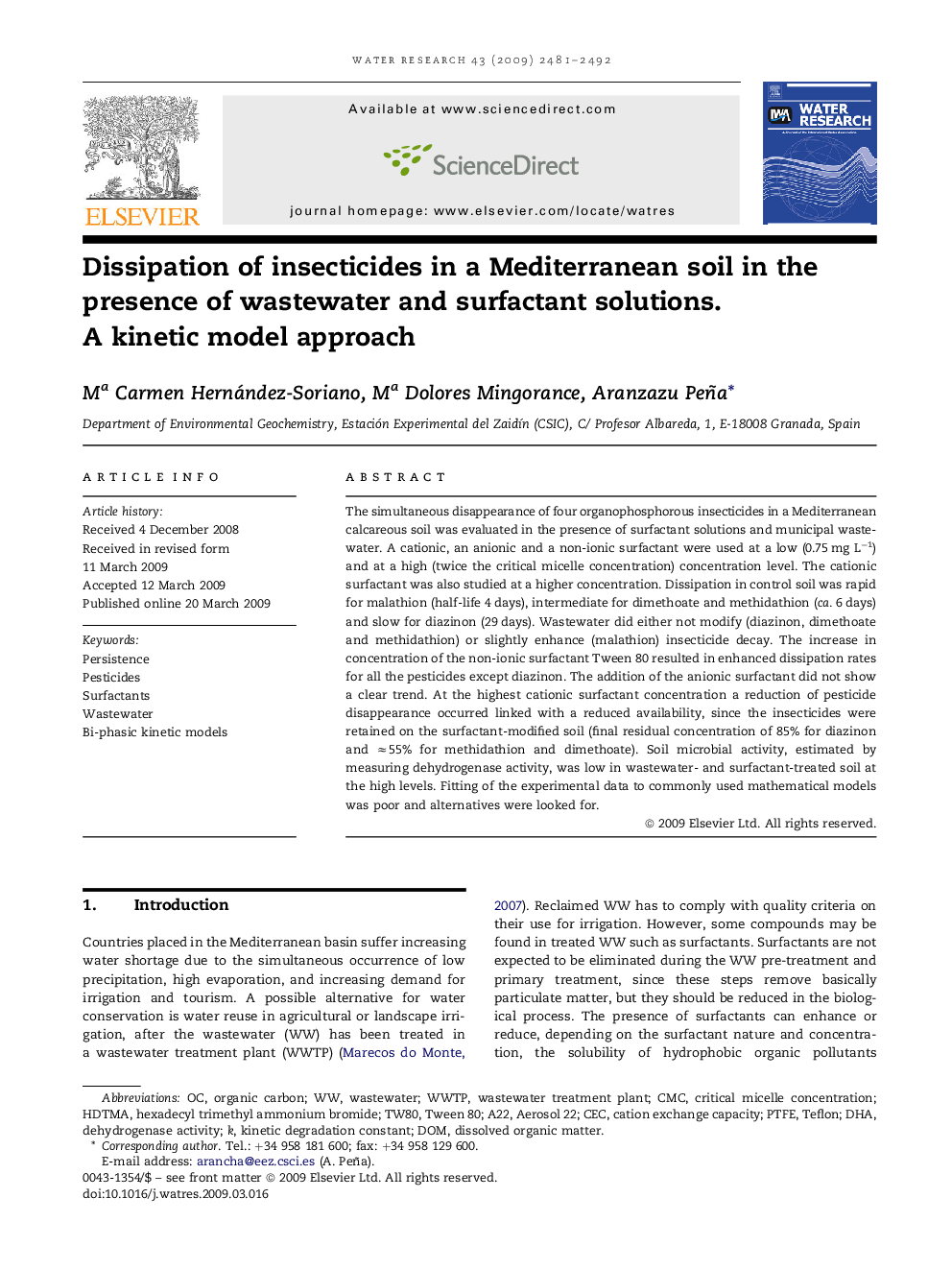| Article ID | Journal | Published Year | Pages | File Type |
|---|---|---|---|---|
| 4484868 | Water Research | 2009 | 12 Pages |
The simultaneous disappearance of four organophosphorous insecticides in a Mediterranean calcareous soil was evaluated in the presence of surfactant solutions and municipal wastewater. A cationic, an anionic and a non-ionic surfactant were used at a low (0.75 mg L−1) and at a high (twice the critical micelle concentration) concentration level. The cationic surfactant was also studied at a higher concentration. Dissipation in control soil was rapid for malathion (half-life 4 days), intermediate for dimethoate and methidathion (ca. 6 days) and slow for diazinon (29 days). Wastewater did either not modify (diazinon, dimethoate and methidathion) or slightly enhance (malathion) insecticide decay. The increase in concentration of the non-ionic surfactant Tween 80 resulted in enhanced dissipation rates for all the pesticides except diazinon. The addition of the anionic surfactant did not show a clear trend. At the highest cationic surfactant concentration a reduction of pesticide disappearance occurred linked with a reduced availability, since the insecticides were retained on the surfactant-modified soil (final residual concentration of 85% for diazinon and ≈55% for methidathion and dimethoate). Soil microbial activity, estimated by measuring dehydrogenase activity, was low in wastewater- and surfactant-treated soil at the high levels. Fitting of the experimental data to commonly used mathematical models was poor and alternatives were looked for.
